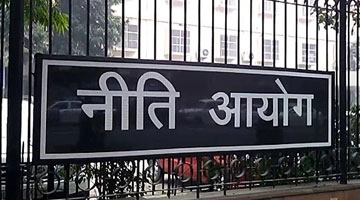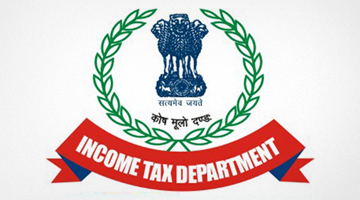NITI Aayog releases report making India an electronics powerhouse by 2030
By TIOL News Service
NEW DELHI, JULY 20, 2024: NITI Aayog yesterday launched the report titled "Electronics: Powering India's Participation in Global Value Chains". The Report extensively analyses India's electronics sector, emphasizing its potential and challenges. It also outlines specific interventions needed for India to emerge as a global manufacturing hub for electronics.
Global Value Chains (GVCs) are critical in modern manufacturing, involving international collaboration across design, production, marketing, and distribution. They represent 70% of international trade, highlighting India's urgent need to enhance its participation, especially in electronics, semiconductors, automobiles, chemicals, and pharmaceuticals. Electronics, in particular, is pivotal, with 75% of its exports originating from GVCs.
India's electronics sector has experienced rapid growth, reaching USD 155 billion in FY23. Production nearly doubled from USD 48 billion in FY17 to USD 101 billion in FY23, driven primarily by mobile phones, which now constitute 43% of total electronics production. India has significantly reduced its reliance on smartphone imports, now manufacturing 99% domestically.
Initiatives like Make in India and Digital India, improved infrastructure and ease of doing business, supported by various incentives, have stimulated domestic manufacturing and attracted foreign investments. Despite these strides, India's electronics market remains relatively moderate, accounting for only 4% of the global market, which has so far focussed primarily on assembly, with limited capabilities in design and component manufacturing.
The global electronics market, valued at USD 4.3 trillion, is dominated by countries like China, Taiwan, USA, South Korea, Vietnam and Malaysia. India currently exports approximately USD 25 billion annually, representing less than 1% of the global share despite 4% share in global demand. To enhance competitiveness, India needs to localize high-tech components, strengthen design capabilities through R&D investments, and forge strategic partnerships with global technology leaders.
The current value of India's electronics production stands impressively at USD 101 billion as of FY 23. This figure comprises USD 86 billion in finished goods production and USD 15 billion in components manufacturing. During the same period, exports totalled ~USD 25 billion, reflecting India's increasing role in the global electronics market. As regards domestic value addition, the sector has also contributed ranging between 15% to 18%, and has generated approximately 1.3 million jobs.
In a Business As Usual (BAU) scenario, projections indicate that India's electronics manufacturing could escalate to USD 278 billion by FY 30. This forecast includes USD 253 billion from finished goods and USD 25 billion from components manufacturing. Employment generation is expected to grow substantially to around 3.4 million, with exports reaching USD 111 billion.
However, India's ambition to become the third-largest global economy necessitates a more ambitious vision for its technology-driven sectors . With a conducive business environment and robust policy support, including fiscal incentives and non-fiscal interventions, India should aim to achieve USD 500 billion in electronics manufacturing by value terms by FY 30. This ambitious target comprises USD 350 billion from finished goods manufacturing and USD 150 billion from components manufacturing. Such growth is projected to create employment for an estimated 5.5 million to 6 million people , significantly boosting job opportunities across the country. Electronics exports are expected to reach USD 240 billion and domestic value addition to increase to more than 35%.
In parallel, the strategy emphasizes scaling up production in established segments such as mobile phones and establishing foothold in component manufacturing. Additionally, there should be a strong focus on diversifying into emerging areas such as wearables, IoT devices, and automotive electronics. This strategic diversification will capitalize on evolving consumer demands and technological advancements, positioning India as a leader in innovative electronic products on the global stage.
The report recommends strategic interventions across fiscal, financial, regulatory, and infrastructure domains to support this ambitious growth trajectory. These include promoting components and capital goods manufacturing, incentivising R&D and Design, tariff rationalization, skilling initiatives, facilitation of technology transfers, and infrastructure development to foster a robust electronics manufacturing ecosystem in India.
India possesses immense potential to establish itself as a global leader in electronics manufacturing. By capitalizing on emerging opportunities, enhancing value chain integration, and overcoming existing challenges, India can transform its electronics sector into a cornerstone of economic growth and job creation.















